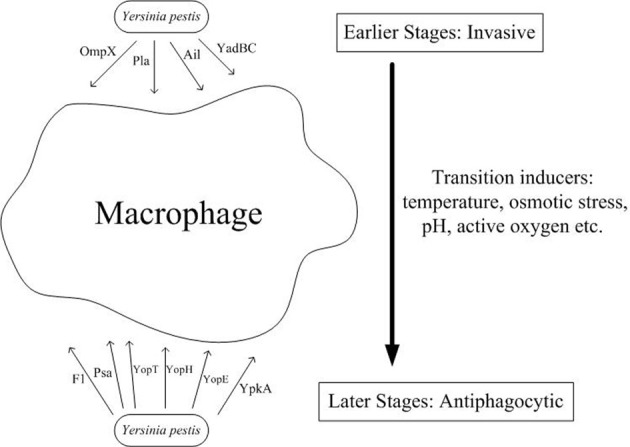Figure 1.

Both invasive and antiphagocytic factors are involved in Y. pestis pathogenesis. During the initial encounter with macrophages during infection, Y. pestis enters the macrophage through binding of its surface proteins, such as Pla, Ail, YadBC, and OmpX, to undetermined receptors present on the macrophage surface. However, following release from the macrophage through another undefined mechanism, Y. pestis expresses several virulence factors, including F1 antigen, Psa, and four Yops (YopT, YopH, YopE, and YpkA) which are employed to resist phagocytosis by the surrounding professional phagocytes. An additional mechanism subsequently arms Y. pestis against host phagocytes of the innate immune system, thereby allowing it to invade more tissues and organs and cause more severe impairment.
